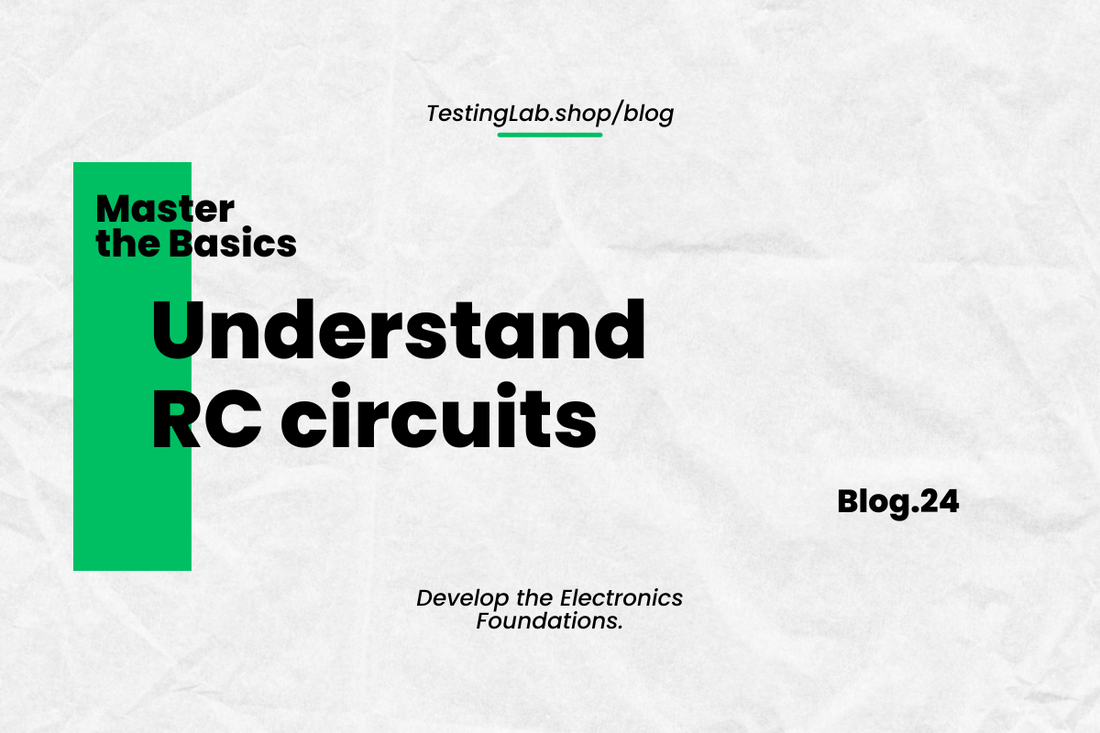
Master the Basics: Understand RC circuits
Share
Capacitors are essential components in electronics, and when combined with resistors, they form RC circuits—a fundamental circuit configuration used in timing, filtering, and energy storage applications. Unlike batteries, capacitors charge and discharge energy quickly, but not instantaneously. Understanding how an RC circuit works will help you design more efficient circuits.

What is an RC Circuit?
An RC circuit consists of a resistor (R) and a capacitor (C) in series with a voltage source. When voltage is applied, the capacitor begins to charge, and its voltage increases over time. However, the rate at which this happens depends on both the resistance and capacitance values.
Charging a Capacitor in an RC Circuit

When a switch is closed in an RC circuit, current flows through the resistor and into the capacitor, gradually filling it with charge. This process follows a nonlinear curve, where:
- The voltage across the capacitor starts at 0V and gradually rises toward the supply voltage.
- The voltage across the resistor starts at the supply voltage and decreases over time.
- The charging rate is fastest at the beginning and slows as the capacitor nears full charge.
To visualize this, imagine blowing air into a balloon. At first, it inflates quickly, but as it fills, it becomes harder to blow in more air. Similarly, as the capacitor charges, the current flowing into it gradually decreases.
Understanding the Time Constant (τ)

The time taken for a capacitor to charge up is determined by a value called the time constant (τ), represented by the Greek letter tau. The formula for an RC circuit’s time constant is:
τ=R×C
Where:
- R is the resistance (in ohms, Ω),
- C is the capacitance (in farads, F),
- τ is the time constant in seconds.
Key Rule:
After one time constant (τ), the capacitor reaches 63% of its final voltage.
After five time constants (5τ), the capacitor is considered fully charged (99%).
For example, if we use a 1,000 μF (1 mF) capacitor and a 1 kΩ resistor, the time constant is:
τ=1,000μF×1kΩ=1 second
This means it will take 1 second to reach 63% of the applied voltage and about 5 seconds to be nearly fully charged.
Discharging a Capacitor in an RC Circuit
When a charged capacitor is connected to a resistor leading to ground, the stored charge is released. The discharge process is similar to charging but in reverse:
- The capacitor starts with full voltage and gradually discharges toward 0V.
- The discharge follows the same time constant rule, where it loses 63% of its voltage after one time constant (τ).
For example, if a capacitor was charged to 5V, after one time constant it would drop to:
5V×37%=1.85V
After five time constants, it is almost completely discharged.
How to Control the Charging and Discharging Time
By adjusting R and C, you can control the speed at which a capacitor charges or discharges:
- Larger resistors (higher R) → slower charge and discharge
- Larger capacitors (higher C) → slower charge and discharge
- Smaller resistors (lower R) → faster charge and discharge
- Smaller capacitors (lower C) → faster charge and discharge
For example, if you replace the 1,000 μF capacitor with a 10 μF capacitor, the time constant decreases to:
τ=10μF×1kΩ=0.01 seconds
This means the capacitor will charge much faster compared to the original setup.
Why RC Circuits Matter
RC circuits are found in many real-world applications, including:
- Timing circuits (e.g., in microcontrollers and oscillators)
- Signal filtering (high-pass and low-pass filters)
- Debouncing switches in digital electronics
- Camera flashes (quick energy bursts)
By mastering RC circuits, you’ll be better equipped to design circuits with precise timing, power storage, and filtering functions.
Final Thoughts
Understanding how resistors and capacitors work together in an RC circuit is essential for any beginner in electronics. Whether you're working with timing applications, signal processing, or power management, knowing how to calculate and control the charging and discharging process will help you create more efficient circuits.